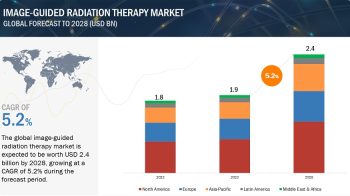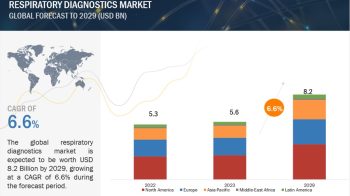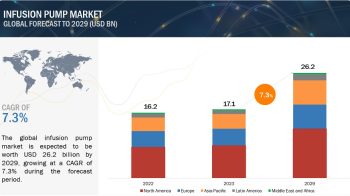Overview:
This study involved four major activities in estimating the current size of the neurovascular devices market. Exhaustive secondary research was done to collect information on the market, peer market, and parent market. The next step was to validate these findings, assumptions, and market sizing with industry experts across the value chain through primary research. Both top-down and bottom-up approaches were used to estimate the total market size. After that, the market breakdown and data triangulation were done to determine the market size of the segments and sub-segments.
Market Size Estimation:
Both top-down and bottom-up approaches have been used to estimate and validate the size of the neurovascular devices/ interventional neurology market and its dependent submarkets. These methods were also used extensively to determine the extent of various sub-segments in the market.
Expected Revenue Surge:
The neurovascular devices market size is expected to grow from an estimated USD 2.5 billion in 2021 to USD 3.8 billion by 2026, at a CAGR of 8.6%.
Download PDF Brohcure@
https://www.marketsandmarkets.com/pdfdownloadNew.asp?id=847
Major Growth Driving Factors:
Expansion of healthcare infrastructure across the emerging markets, growing adoption of novel neurovascular devices, and greater research in the field of neurovascular therapies are high growth prospects for the neurovascular devices/ interventional neurology market during the forecast period.
Restraints: High procedural cost of neurovascular surgeries and related products
The high cost of neurovascular surgical procedures and devices is a major factor restraining the global neurovascular devices market, especially in developing countries with poor reimbursement policies. The average cost of standard procedures to treat aneurysm and artery disorders is USD 45,000 to USD 50,000 in the US. Additionally, maintenance costs and other associated indirect expenses increase the total cost of ownership of these devices, thereby limiting their adoption.
Small hospitals and standalone ASCs are less inclined to invest in costly and sophisticated technologies due to budgetary constraints; this is more prominent in developing countries. Owing to high costs and a poor reimbursement scenario, a very limited pool of patients in developing countries can afford neurological treatment. As a result, healthcare facilities are reluctant to invest in new or technologically advanced systems, thus limiting the neurovascular devices market.
The ambulatory care centers segment is expected to grow at the highest CAGR during the forecast period.
Based on end-user, the neurovascular devices market has been segmented into hospitals & surgical centers, ambulatory care centers, and research laboratories, and academic institutes. As of 2020, hospitals & surgical centers are estimated to account for the largest share of the global market in 2021, while ambulatory care centers are projected to register the highest CAGR during the forecast period. Growing patient preference for minimally invasive medical procedures, rising number of ambulatory surgery centers across developed countries, along with the ease of scheduling, the focused clinical staff, the improved productivity, and the increased safety, and efficacy of these centers, are the major factors that are expected to drive the growth of this end-user segment in the coming years.
North America is expected to be the largest market during the forecast period.
North America is estimated to be the largest market for neurovascular devices during the forecast period. The neurovascular devices market in North America is driven primarily by factors such as the significant disease burden, increased number of minimally invasive neurology procedures, and continued expansion of trauma/emergency care facilities in US.
Request Sample Pages@
https://www.marketsandmarkets.com/requestsampleNew.asp?id=847


